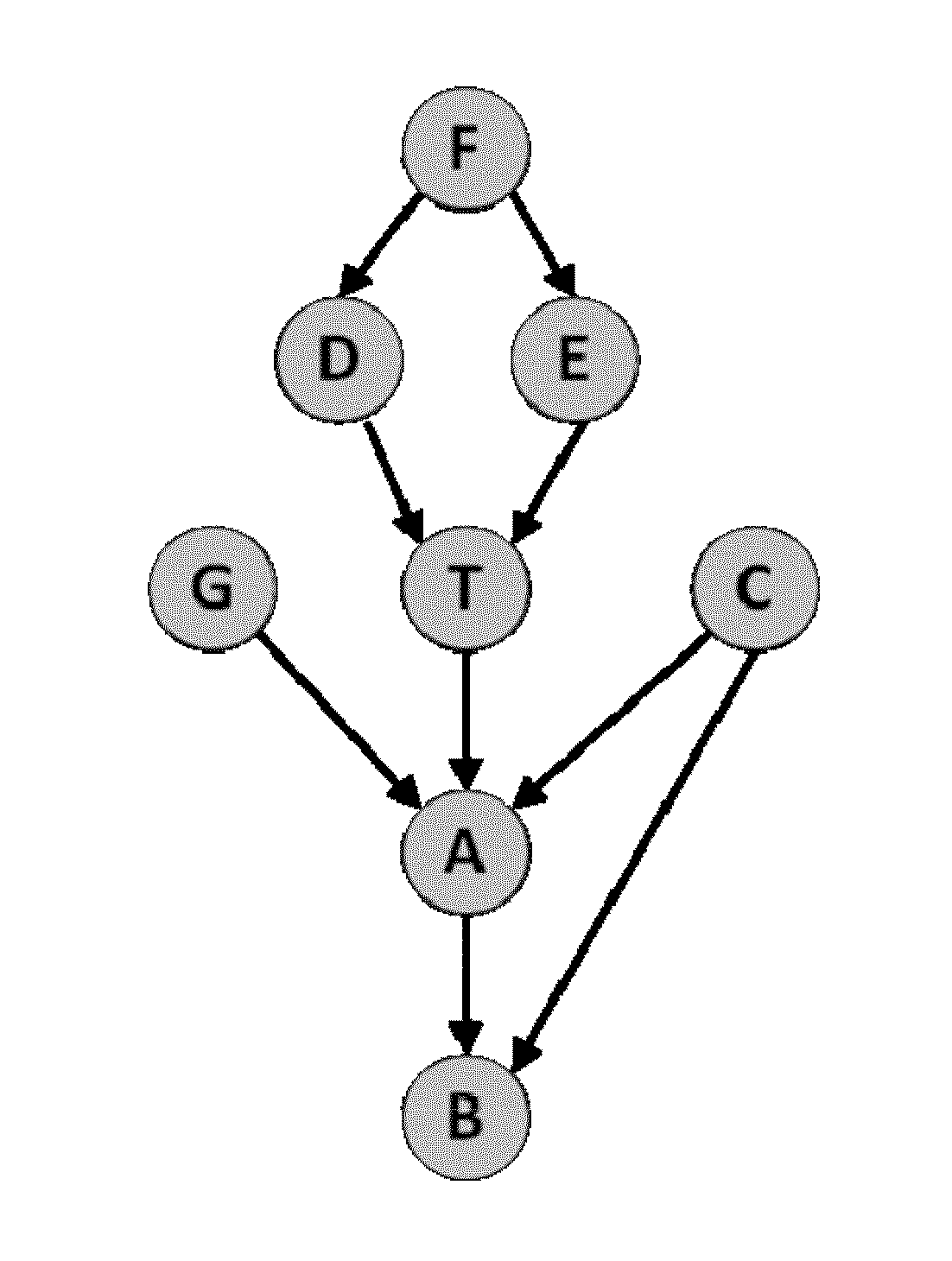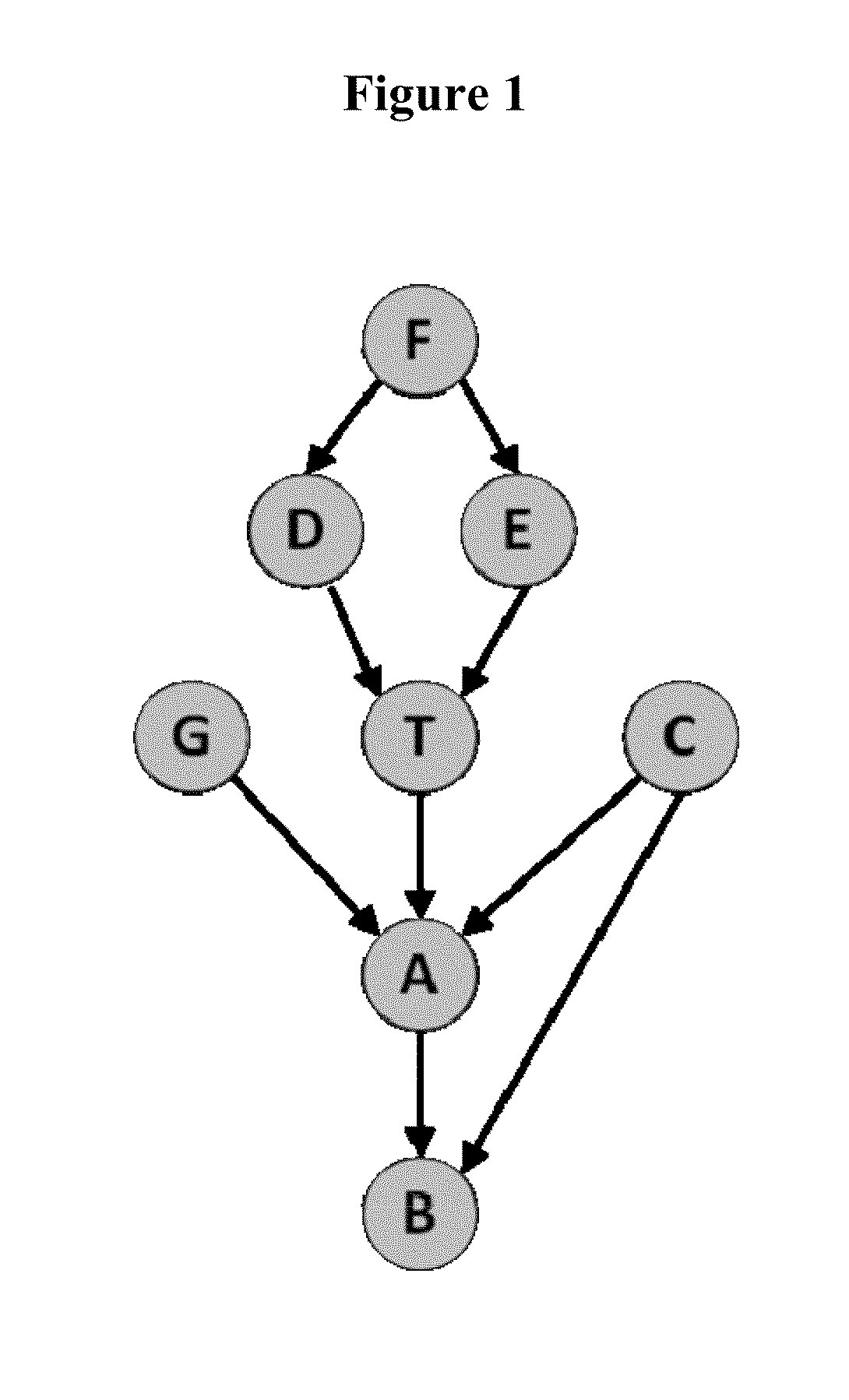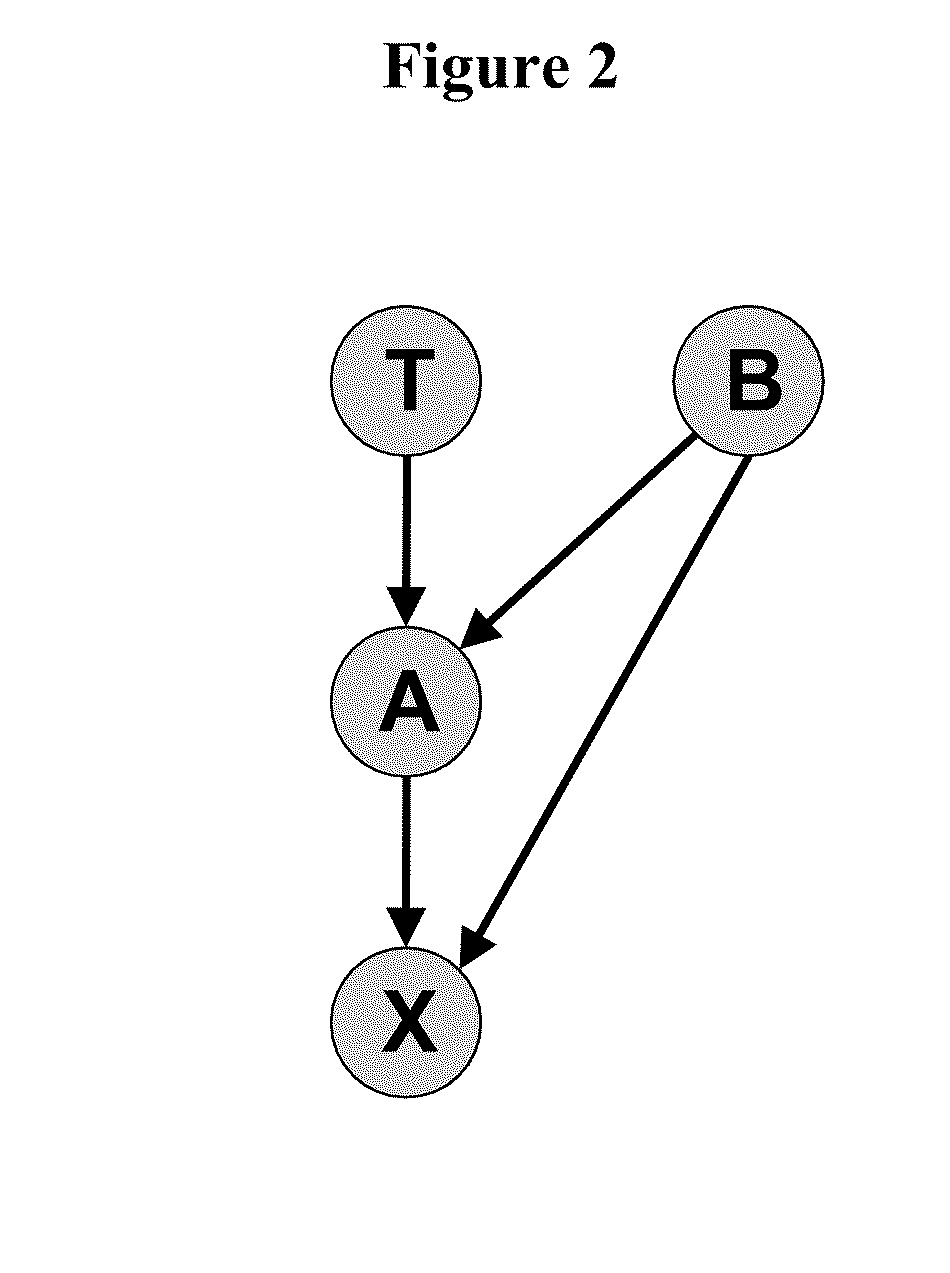Local Causal and Markov Blanket Induction Method for Causal Discovery and Feature Selection from Data
a local causal and markov blanket induction method technology, applied in the direction of knowledge representation, instruments, pulse techniques, etc., can solve the problems of requiring a threshold parameter that cannot be easily optimized, method to stop its execution prematurely, and inapplicability to many typical datasets
- Summary
- Abstract
- Description
- Claims
- Application Information
AI Technical Summary
Problems solved by technology
Method used
Image
Examples
Embodiment Construction
Introduction
[0042]This specification provides a description of the novel generative method for learning local causal structure and feature selection that were just published in the premier journal of machine learning, the Journal of Machine Learning Research (Aliferis et al., 2010a; Aliferis et al., 2010b). Such generative method enables a systematic exploration of a family of related but not identical specific methods which can be seen as instantiations of the same broad methodological principles encapsulated in the generative method. Also, the novel method allow a user to analyze formal conditions for correctness not only at the method level but also at the level of method family.
[0043]The following two problems of local learning are considered and the solutions provided in this patent document:
[0044]PROBLEM 1: Given a set of variables V following distribution P, a sample D drawn from P, and a target variable of interest T∈V: determine the direct causes and direct effects of T.
[00...
PUM
 Login to View More
Login to View More Abstract
Description
Claims
Application Information
 Login to View More
Login to View More - R&D
- Intellectual Property
- Life Sciences
- Materials
- Tech Scout
- Unparalleled Data Quality
- Higher Quality Content
- 60% Fewer Hallucinations
Browse by: Latest US Patents, China's latest patents, Technical Efficacy Thesaurus, Application Domain, Technology Topic, Popular Technical Reports.
© 2025 PatSnap. All rights reserved.Legal|Privacy policy|Modern Slavery Act Transparency Statement|Sitemap|About US| Contact US: help@patsnap.com



